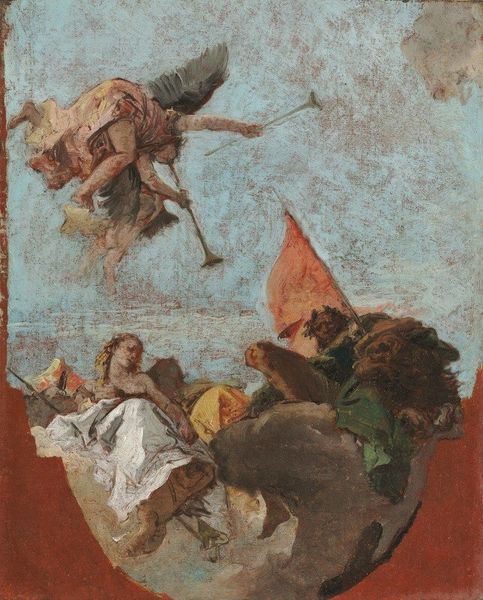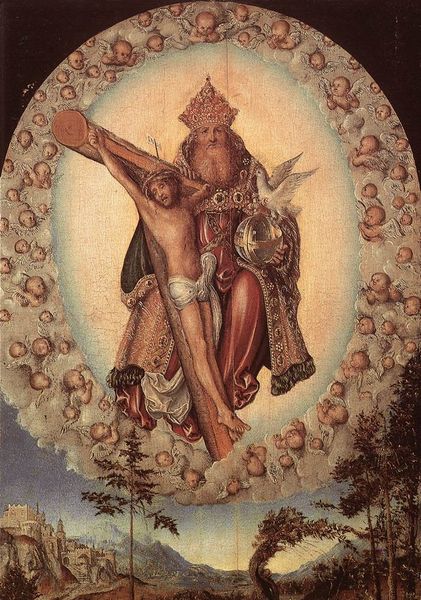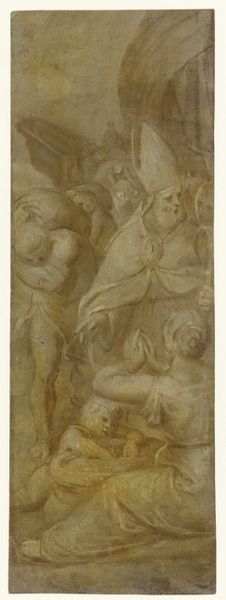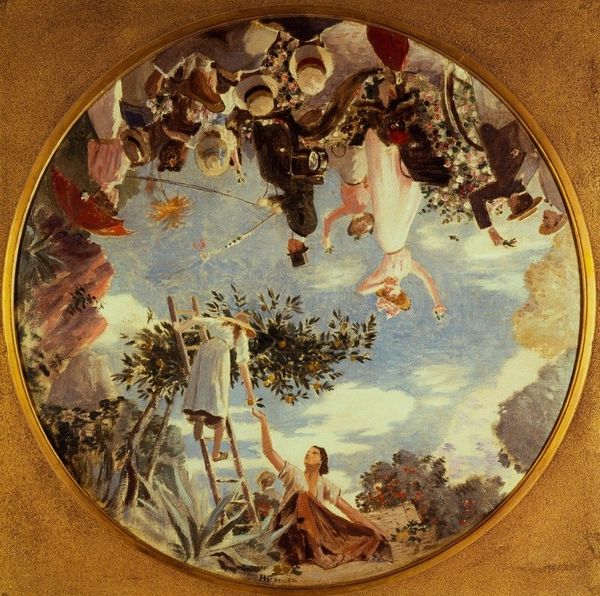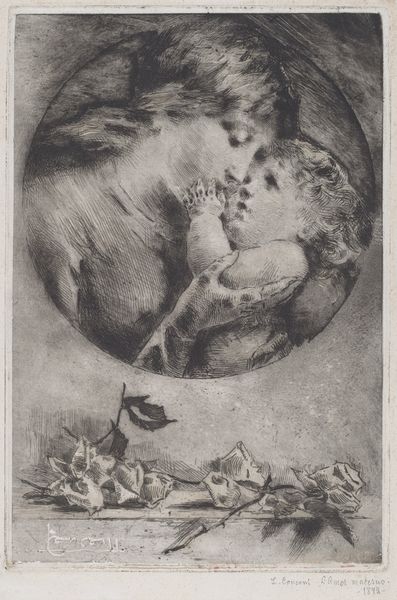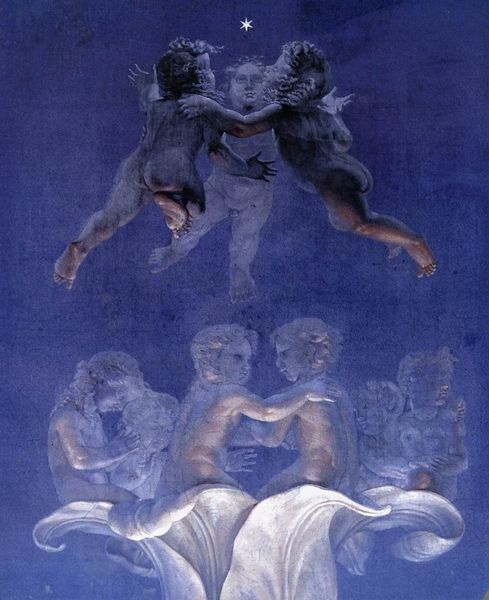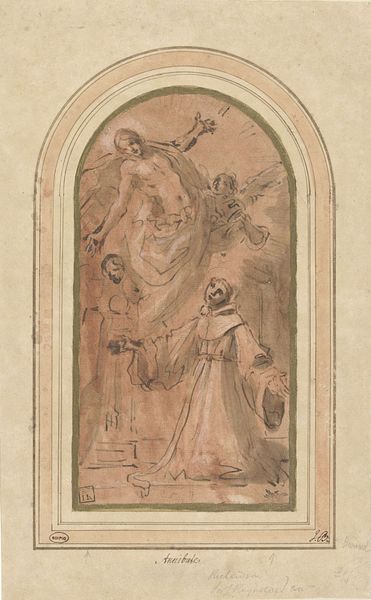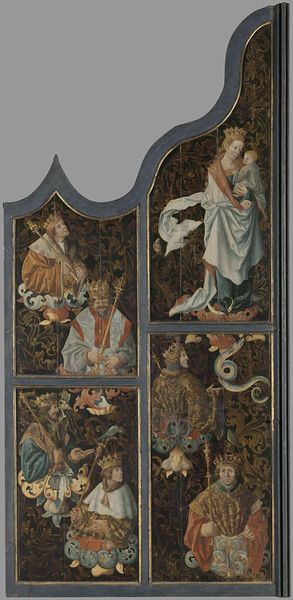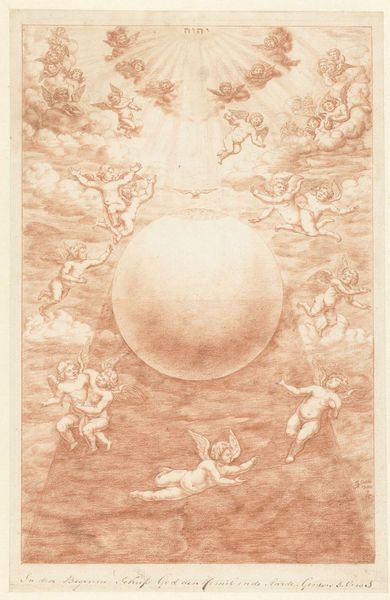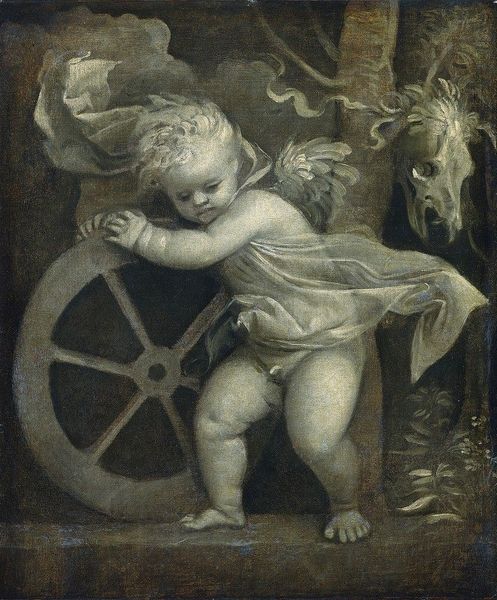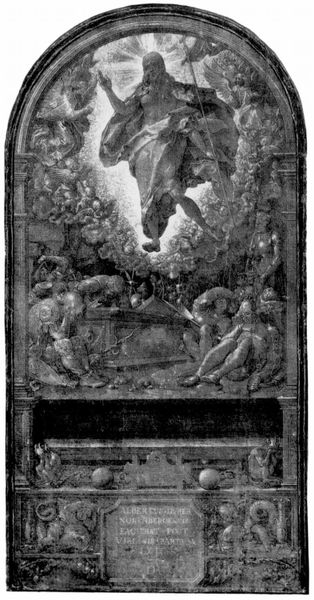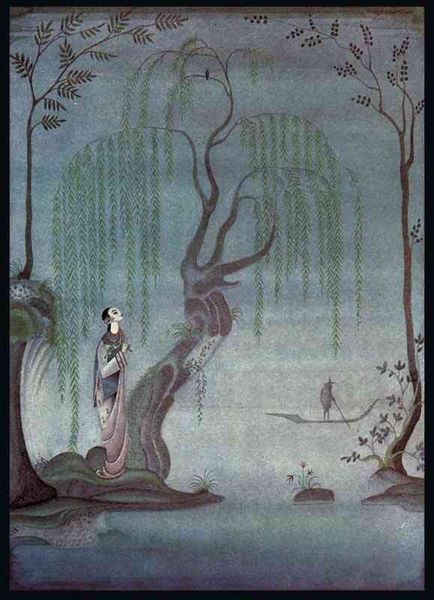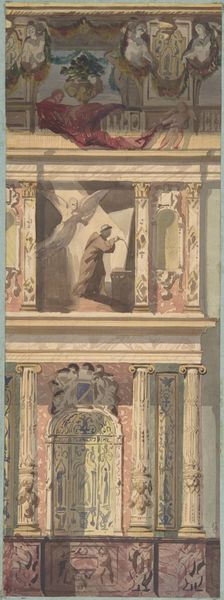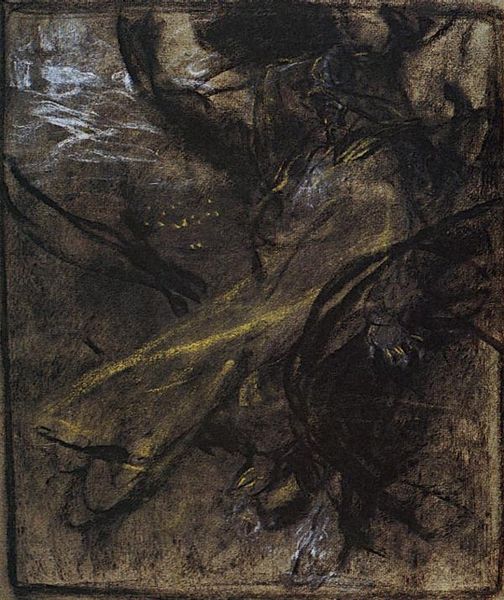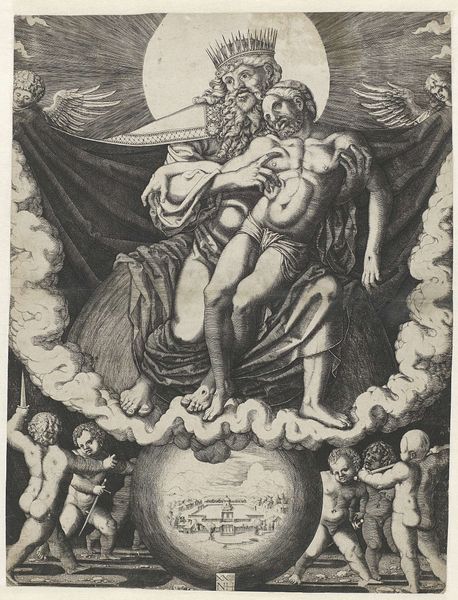
painting, oil-paint, fresco
#
allegory
#
baroque
#
painting
#
oil-paint
#
figuration
#
fresco
#
oil painting
#
roman-mythology
#
mythology
#
history-painting
Dimensions: 300 x 180 cm
Copyright: Public domain
Editor: This is Caravaggio's "Jupiter, Neptune, and Pluto," painted in 1597 as a ceiling fresco. What strikes me is the dynamism, how all the figures are contorted, practically spiraling around this central orb. How do you interpret this unusual composition? Curator: Indeed. The composition presents an interesting problem of representation, a tondo almost literally bursting forth from the constraints of the architecture. The foreshortening is aggressively displayed, forcing a consideration of the planar relationships at play. Do you find the rendering of light effective in creating depth, particularly the dramatic shadows defining muscular forms? Editor: Absolutely, the light emphasizes the volume. It is quite directional and gives these figures a real sense of heft. It's almost sculptural. But, formally, the upward thrust and rotation feel somewhat unsettling. Is that intentional, or is there another visual device that brings balance? Curator: Note that Caravaggio uses an economy of compositional devices. What seems like a maelstrom of limbs can also be reduced to three individual poses, or gestures. See how they radiate around and, to a certain degree, echo the shape of that orb? That repetition provides structure, a sort of visual grammar to the overall design. Editor: Ah, I see it now. So even amidst the apparent chaos, there's a definite underlying order based on line, form, and repetition. This close reading truly enhances one’s understanding beyond subject matter. Curator: Precisely, by emphasizing structural organization, we identify inherent coherence in seemingly chaotic visual arrangements, as well as see art-making as the application of theoretical concepts. I am glad you understand, for it serves as an invaluable analytic lens.
Comments
No comments
Be the first to comment and join the conversation on the ultimate creative platform.
